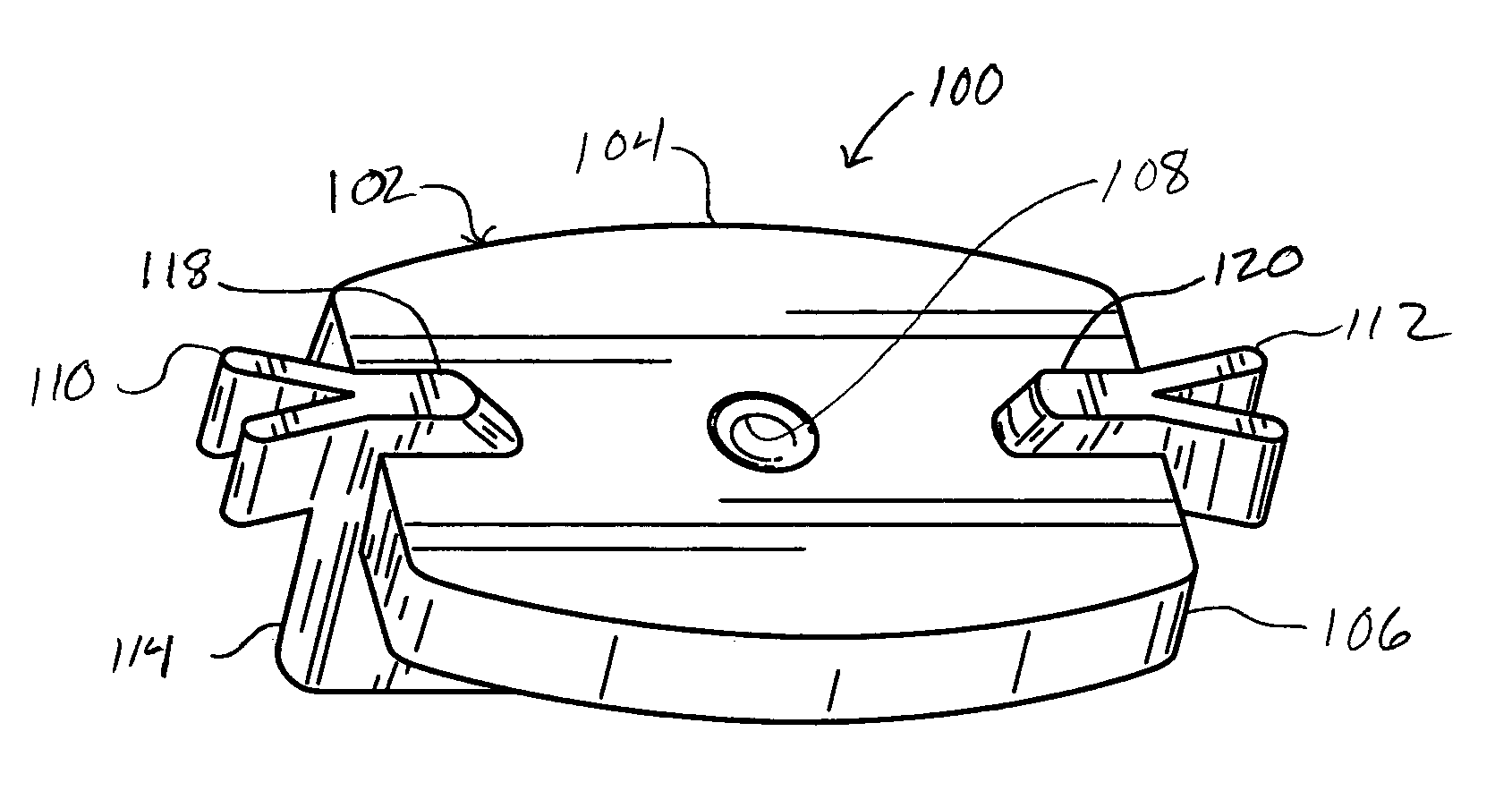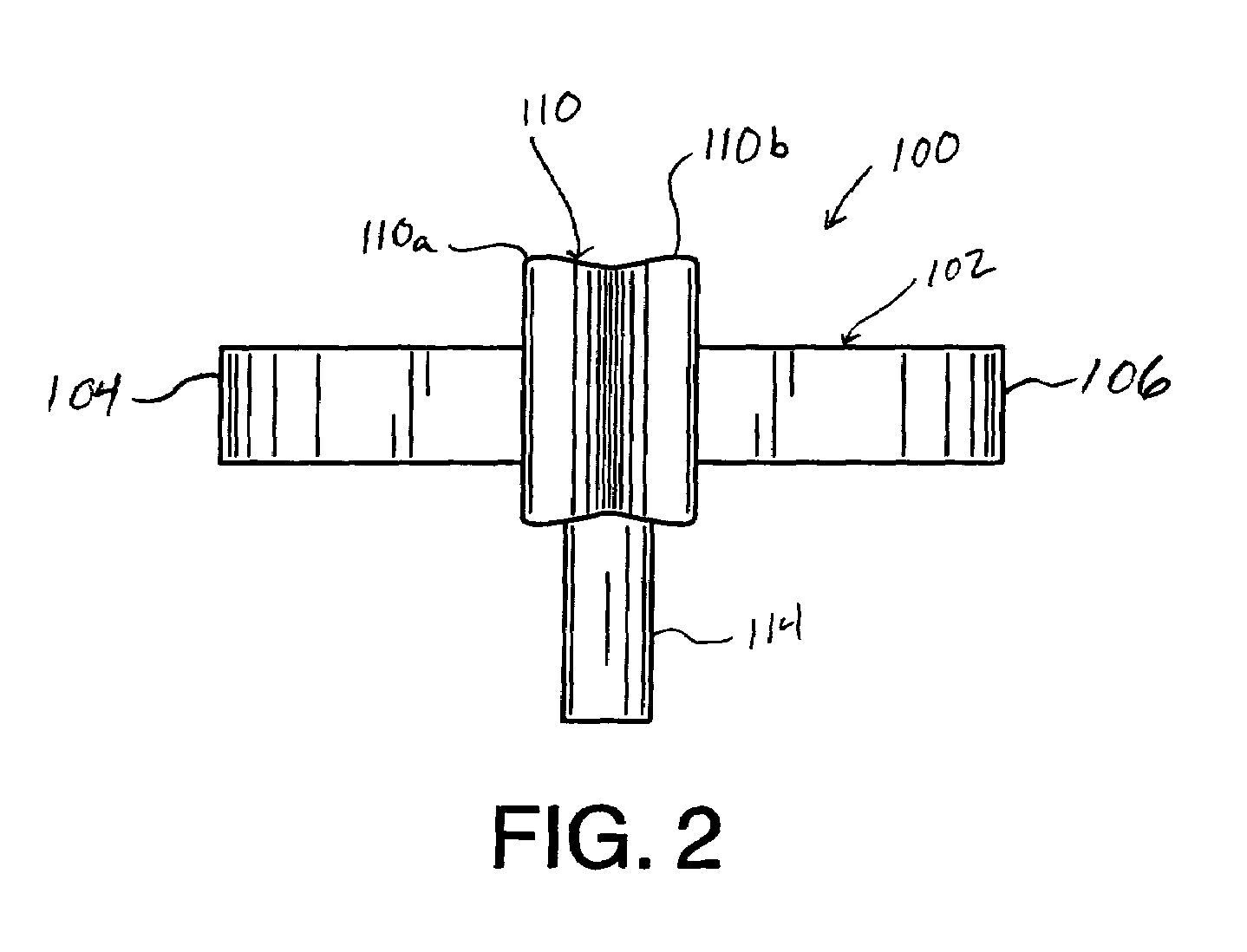Resilient deck board fastener
a resilient, deck board technology, applied in the direction of couplings, rod connections, manufacturing tools, etc., can solve the problems of unsightly dents and scratches on the top surface of the board, nails have a tendency to loosen themselves from the board over time, and the surrounding wood surface is discolored
- Summary
- Abstract
- Description
- Claims
- Application Information
AI Technical Summary
Benefits of technology
Problems solved by technology
Method used
Image
Examples
Embodiment Construction
[0034]Turning to the drawings, preferred embodiments of the device will be described by reference to the drawing figures wherein like numerals indicate like parts.
[0035]FIG. 1 provides a perspective view of a deck board fastener 100 in accordance with the principles of the present invention. The fastener 100 includes a horizontal top plate 102 having a first flange 104 and a second flange 106 projecting horizontally from the longitudinal axis of the top plate 102. The fastener 100 also includes a hole 108 extending through the center vertical axis of the top plate 102. As illustrated in FIG. 1, a first compression element 110 projects horizontally outward from the left edge of the top plate 102. A second compression element 112 projects horizontally outward from the right edge of the top plate 102.
[0036]FIG. 3 is a side elevational view of the fastener 100 of FIG. 1. As illustrated, a first bottom tab 114 and a longitudinally opposed second bottom tab 116 project downward from the b...
PUM
 Login to View More
Login to View More Abstract
Description
Claims
Application Information
 Login to View More
Login to View More - R&D
- Intellectual Property
- Life Sciences
- Materials
- Tech Scout
- Unparalleled Data Quality
- Higher Quality Content
- 60% Fewer Hallucinations
Browse by: Latest US Patents, China's latest patents, Technical Efficacy Thesaurus, Application Domain, Technology Topic, Popular Technical Reports.
© 2025 PatSnap. All rights reserved.Legal|Privacy policy|Modern Slavery Act Transparency Statement|Sitemap|About US| Contact US: help@patsnap.com



